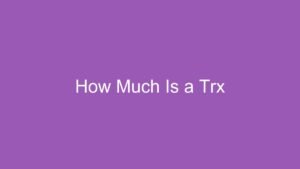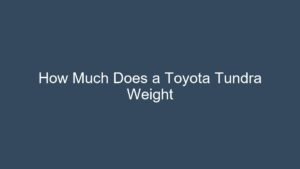
Contents
- How Much Is a Hyundai Tucson? Your Complete Guide to Understanding the Price
- The Starting Point: Understanding the Hyundai Tucson’s MSRP (Manufacturer’s Suggested Retail Price)
- 🛒 Recommended Product
- Key Factors That Influence the Price of a New Hyundai Tucson
- The “Out-the-Door” Price: Beyond MSRP
- What About Used Hyundai Tucsons?
- 🛒 Recommended Product
- Your Step-by-Step Guide to Estimating the Cost of a Hyundai Tucson
- 🛒 Recommended Product
- Helpful Tips for Smart Hyundai Tucson Shopping
- Common Mistakes to Avoid When Buying a Hyundai Tucson
- Conclusion
- FAQ
How Much Is a Hyundai Tucson? Your Complete Guide to Understanding the Price
Thinking about getting behind the wheel of a versatile and stylish Hyundai Tucson? That’s a fantastic choice! The Tucson is a popular compact SUV known for its comfortable ride, modern features, and great value. But before you get too excited about the panoramic sunroof or the advanced safety tech, one of the biggest questions on your mind is likely: “How much is a Hyundai Tucson?”
The simple answer is: it varies. While that might not be the direct number you’re looking for, understanding why it varies and what factors influence the price is key to making a smart purchase. This detailed guide will break down everything you need to know, from the initial sticker price to the “out-the-door” cost, empowering you to navigate the buying process with confidence.
The Starting Point: Understanding the Hyundai Tucson’s MSRP (Manufacturer’s Suggested Retail Price)
The MSRP is the official suggested selling price set by Hyundai for a brand-new Tucson. It’s the baseline, the advertised starting point, but rarely the final price you’ll pay.
🛒 Recommended Product
For a new Hyundai Tucson, you can generally expect the MSRP to range anywhere from around $27,000 for an entry-level gasoline model to upwards of $40,000 for a fully-loaded hybrid or plug-in hybrid (PHEV) variant.
Why such a wide range? This brings us to the first major factors influencing the price:
- Trim Levels: Like most vehicles, the Tucson comes in various trim levels (e.g., base, mid-range, premium). Each trim adds more features, technology, comfort, and sometimes different engine options, directly increasing the price. An entry-level model will naturally cost significantly less than a top-tier one.
- Powertrain Options: The Tucson is available with a traditional gasoline engine, a hybrid powertrain, and a plug-in hybrid (PHEV) option. Hybrid and PHEV models typically command a higher MSRP due to their more complex technology and improved fuel efficiency.
Key Factors That Influence the Price of a New Hyundai Tucson
Beyond the basic MSRP range, several other elements contribute to the final price tag:
- Optional Features and Packages: Want heated seats, a larger infotainment screen, advanced driver-assistance features, or a premium sound system? These often come as optional add-ons or are bundled into convenience or technology packages, which will increase the cost.
- Destination Charge (or Freight Charge): This is a non-negotiable fee charged by the manufacturer to transport the vehicle from the factory to the dealership. It’s usually a flat fee across all trims and is added to the MSRP. Don’t be surprised by this – it’s standard.
- Dealer-Added Accessories or Markups: Some dealerships might add their own accessories (like floor mats, paint protection, nitrogen in tires) or market adjustments to the price, especially if the vehicle is in high demand. Always ask for an itemized list and question anything you don’t want or understand.
The “Out-the-Door” Price: Beyond MSRP
The MSRP and added features are just part of the equation. The “out-the-door” price is the total amount you’ll pay to drive the car off the lot, including all fees, taxes, and charges. This is the number you need to focus on when comparing offers.
Here’s what typically gets added:
- Sales Tax: This is a significant cost, determined by your state and local tax rates. It’s calculated based on the purchase price of the vehicle (after any trade-in value is deducted in some states).
- Registration and Licensing Fees: These are fees paid to your state’s Department of Motor Vehicles (DMV) to register the vehicle in your name and get your license plates. These vary by state and sometimes by vehicle weight or value.
- Dealer Documentation Fees (Doc Fees): This fee covers the cost of preparing and processing the sales paperwork. Doc fees are typically non-negotiable and vary widely by state (some states cap them, others don’t). Ask for the doc fee upfront.
- Other Potential Fees: Depending on your location and the dealership, there might be small fees for things like tire disposal, emissions testing, or temporary plates.
What About Used Hyundai Tucsons?
If a brand-new Tucson isn’t in your budget, or you simply prefer the value of a pre-owned vehicle, a used Hyundai Tucson can be an excellent option. Used car prices are significantly influenced by depreciation. As soon as a new car is driven off the lot, it starts to lose value.
For a used Hyundai Tucson, the price will depend on several factors:
- Model Year: Newer used models (e.g., 1-3 years old) will be more expensive than older ones.
- Mileage: Lower mileage generally means a higher price.
- Condition: The overall physical and mechanical condition of the vehicle (interior, exterior, engine, tires) plays a huge role.
- Trim Level & Features: Just like new cars, a used premium trim will cost more than a used base model.
- Vehicle History Report: A clean history (no accidents, regular maintenance) adds value.
- Market Demand: Local and national demand for the Tucson can influence prices.
You can typically find well-maintained used Hyundai Tucsons ranging from under $15,000 for older models with higher mileage to $25,000+ for newer, low-mileage vehicles. Always check reputable used car listing sites and get a pre-purchase inspection from an independent mechanic.
🛒 Recommended Product
Your Step-by-Step Guide to Estimating the Cost of a Hyundai Tucson
Ready to get a more concrete idea of what a Tucson might cost you? Follow these steps:
Step 1: Research Current MSRP Range for New Models.
* Visit Hyundai’s official website or reputable automotive sites. Look at the general MSRP range for the current model year’s Tucson. Don’t worry about specific trims just yet, just get a broad idea.
Step 2: Define Your Needs & Preferences.
* Decide on your desired trim level: Do you need the most basic, a comfortable mid-range, or a fully loaded premium model?
* Choose your powertrain: Do you want gasoline, hybrid, or plug-in hybrid? This is a major cost differentiator.
* Identify must-have features: List any essential safety, tech, or comfort features. This will help narrow down the trim or package options.
Step 3: Factor in “Out-the-Door” Costs.
* Estimate sales tax: Find your state’s sales tax rate for vehicles and apply it to your estimated purchase price.
* Estimate registration and licensing fees: Your state’s DMV website usually provides this information.
* Research average dealer documentation fees: You can often find ranges for your state online.
* Add the destination charge: This is usually available on Hyundai’s website.
Step 4: Check for Current Incentives and Rebates.
* Hyundai frequently offers special financing rates, cash back, or lease deals. Check Hyundai’s website “Offers” section or ask dealerships about any current promotions that could lower the price.
Step 5: Consider Your Trade-in Value (If Applicable).
* If you have a car to trade in, get an estimate of its value from online appraisal tools (like Kelley Blue Book or Edmunds) and multiple dealerships. This amount will directly reduce the overall cost of your new Tucson.
Step 6: Get Multiple Quotes (The Smart Shopper’s Secret).
* Once you have a good idea of the model and features you want, contact at least 3-5 different dealerships (in person, by phone, or email) and ask for an “out-the-door” price quote on your desired Hyundai Tucson configuration. This fosters competition and ensures you get the best deal.
Step 7: Factor in Financing (If You’re Not Paying Cash).
* If you’re taking out a loan, the total cost will also include interest. Get pre-approved for a loan from your bank or credit union before visiting the dealership so you have a competitive rate to compare against dealer financing.
🛒 Recommended Product
Helpful Tips for Smart Hyundai Tucson Shopping
- Be Prepared: Know what you want and what you’re willing to pay before stepping into a dealership.
- Shop Around: This applies to both the vehicle price and financing. Don’t settle for the first offer.
- Read the Fine Print: Thoroughly review all paperwork before signing anything. Ensure every charge is itemized and explained.
- Don’t Forget Long-Term Costs: Beyond the purchase price, factor in insurance, fuel, maintenance, and potential future repairs.
- Be Patient: Car buying can take time. Don’t feel pressured to make a quick decision.
Common Mistakes to Avoid When Buying a Hyundai Tucson
- Focusing Only on MSRP: This is a big one! Remember, MSRP is just the starting point. Always focus on the “out-the-door” price.
- Ignoring “Out-the-Door” Costs: Forgetting about taxes, registration, and fees can lead to significant sticker shock later.
- Not Shopping Around: Sticking to one dealership means you miss out on potentially better deals and incentives elsewhere.
- Forgetting About Your Trade-in Value: Your current vehicle is a valuable asset. Research its worth and use it as leverage.
- Skipping a Test Drive (New or Used): Always test drive the exact model you’re considering to ensure it meets your comfort and driving preferences. For used cars, a pre-purchase inspection by an independent mechanic is crucial.
- Rushing the Decision: Take your time, do your research, and don’t let anyone pressure you into a purchase you’re not entirely comfortable with.
Conclusion
So, how much is a Hyundai Tucson? As we’ve seen, there’s no single number, but armed with this information, you’re well on your way to figuring out the perfect price for your budget. By understanding the different factors that contribute to the cost, diligently researching, and being a smart negotiator, you can confidently drive home in your new or used Hyundai Tucson. Happy car hunting!
FAQ
Q. What is the starting MSRP for a new Hyundai Tucson?
A. The Manufacturer’s Suggested Retail Price (MSRP) for a new Hyundai Tucson typically starts in the mid-$20,000 range for the base SE trim level. For example, the 2024 model year might begin around $27,500, but this can vary slightly based on the exact model year, region, and any factory-mandated price adjustments.
Q. How do trim levels and optional features impact the price of a Hyundai Tucson?
A. The price of a Hyundai Tucson significantly increases with higher trim levels. Moving from the base SE to SEL, N Line, Limited, or Calligraphy trims will add thousands to the price, as each level includes more standard features, advanced technology, premium materials, and larger wheels. Optional packages, accessories (like roof racks or floor mats), and specific paint colors can also add hundreds or even a few thousand dollars to the total.
Q. What is the typical “out-the-door” price for a Hyundai Tucson, and how does it differ from MSRP?
A. The “out-the-door” price is the total amount you pay for the vehicle, including all taxes, registration fees, destination charges, dealer fees, and any optional add-ons. It is almost always higher than the MSRP. While the MSRP for a base Tucson might be $27,500, the out-the-door price could easily be $30,000 to $33,000 or more, depending on your local sales tax, dealer charges, and chosen trim/options.
Q. How much does a used Hyundai Tucson cost, and what factors influence its price?
A. A used Hyundai Tucson can range widely in price, from under $15,000 for older models with higher mileage to over $30,000 for recent model years (1-3 years old) with low mileage and higher trim levels. Factors influencing the price include the model year, mileage, trim level, overall condition, accident history, local market demand, and whether it’s certified pre-owned (CPO) by a Hyundai dealership.
Q. How does the price of a Hyundai Tucson Hybrid or Plug-in Hybrid compare to the standard gasoline model?
A. The Hyundai Tucson Hybrid and Plug-in Hybrid (PHEV) models typically have a higher starting MSRP than their gasoline-only counterparts. For example, a Tucson Hybrid might start in the low to mid-$30,000 range, while a Tucson PHEV could begin around $39,000 or more. This higher initial cost is offset by potential fuel savings, and the PHEV might also qualify for federal or state tax credits, depending on the specific model year and your eligibility.
Q. What ongoing costs should I consider beyond the purchase price of a Hyundai Tucson?
A. Beyond the initial purchase, you should budget for ongoing costs such as fuel (gas or electricity), insurance (which varies by driver, location, and coverage), routine maintenance (oil changes, tire rotations, etc.), and potential repairs. While Hyundai offers a strong warranty, these operational costs contribute to the total cost of ownership over time.
Q. Can I find special deals or incentives on a Hyundai Tucson to lower the price?
A. Yes, Hyundai often offers various incentives to buyers, which can include low APR financing deals, cash-back rebates, or lease specials. These offers vary by region, model year, and time of year. Checking the official Hyundai website, local dealership promotions, and comparing prices from different dealers can help you find potential discounts or better terms to lower the effective price.
Related Articles
How Much Does a Tesla Cybertruck Cost
How Much Does a Tesla Cybertruck Cost? Your Ultimate Guide to Pricing & Purchase The Tesla Cybertruck has captured imaginations with its futuristi…
How Much Is a Tesla
How Much Is a Tesla? Unpacking the Cost of Your Dream EV Dreaming of driving a Tesla? You’re not alone! These innovative electric vehicles have …
Affiliate Disclosure: As an Amazon Associate, I earn from qualifying purchases made through links on this site.















